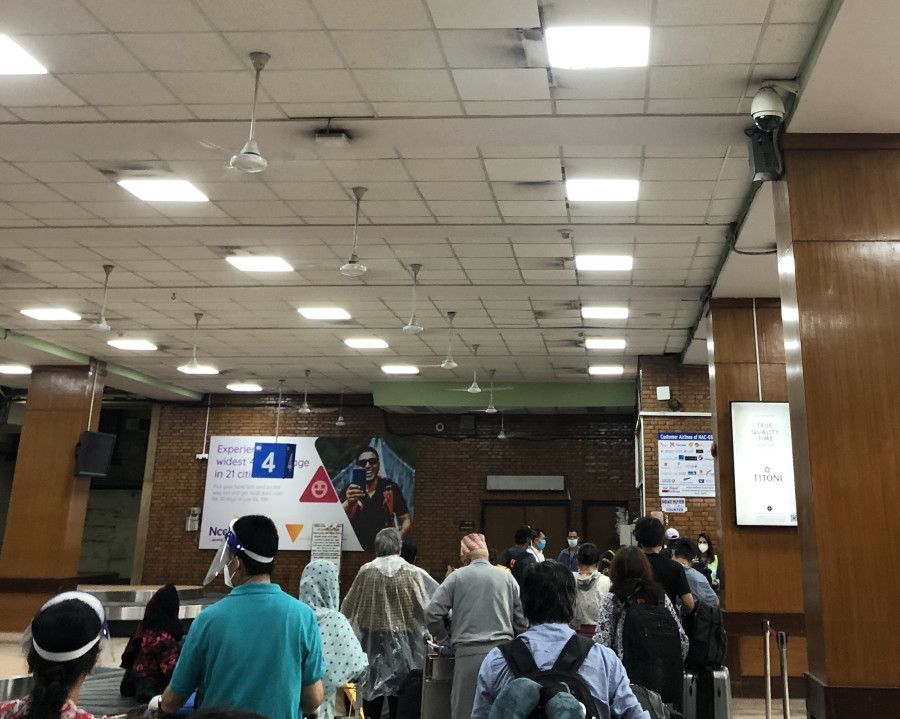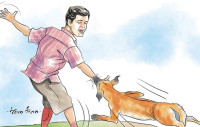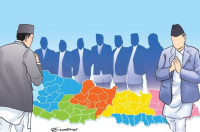Columns
The privilege of returning to Nepal
The scene at the airport was strikingly different from what is published in the papers.
Aasna Sijapati
After three months of strict border closure in light of Covid-19, the first repatriation flight from the United States landed at Tribhuvan International Airport on June 24. After months mired in frustration and uncertainty, 282 stranded Nepalis finally managed to get on this flight back home from John F Kennedy International Airport in New York at a hefty cost of $1,537. Before starting my highly awaited, almost 48-hour long repatriation journey from Minneapolis to Kathmandu, I had done ample research on travelling as safely as possible. I felt especially reassured reading articles that described the renovation of Tribhuvan International Airport and all the precautionary measures the Civil Aviation Authority of Nepal would be taking to minimise the spread of the virus and to ensure the safety of arriving passengers.
‘The immigration and medical processes once you land here are going to be long and potentially infuriating. Just be patient and endure it’, my father had warned me. I was actually glad that there was a lengthy procedure in place. It felt safer than just depending on the polymerase chain reaction (PCR) tests that most of us had completed before starting our journey.
No social distancing
But upon landing, we were greeted by a scene that was strikingly different from what is published in the national newspapers. My concern for our safety began as soon as 30-40 of us were made to board the first airport shuttle without being asked to abide by any social distancing measures. As we stood crammed in the poorly ventilated hallway leading to the immigration control area, it became evident that the white marks on the floor that were meant to keep us six feet apart served as nothing more than decoration. By the time four passenger shuttles arrived, the hallway was filled with over 250 people fanning themselves with the health declaration forms we had filled out on the aeroplane.
After nearly two hours of profusely sweating through our masks, we realised that we had stood in this disordered and unsanitary crowd merely to submit our health declaration forms and show the results of our PCR tests. As we moved on to yet another queue, with only two immigration booths for more than 500 passengers from two aircraft trying to get their passports stamped, the length of the process was the least of our problems. The chaos at the luggage belt with most people rushing to get their hands on a trolley while others roamed around haphazardly in search of their suitcases illustrated the lack of a system that enforced any sort of precautionary measures. Unfortunately, we weren’t even close to the finish line.
After boarding buses marked according to our home districts, we started yet another time-consuming process: Waiting to be transported to a holding centre for our medical check-ups. The bus finally took us to Mandala Party Palace at Balkumari for my final step of this process. Although this time the centre was relatively well managed with people following social distancing measures to some extent, I failed to see the point of this sub-par effort after the chaotic and unsafe processes we had completed throughout the day. It was almost humorous finding out that the final 'medical check-up' consisted of again getting our temperatures checked and presenting our PCR reports.
We did, however, receive new SIM cards which were mandatory for us to use for the next 14 days during the duration of our quarantine. The centre also had a water spot for passengers, but by 7:30 pm, when I had completed this process, I couldn’t see a single bottle of water. Almost six hours after landing at Tribhuvan International Airport, I was finally allowed to leave for my home quarantine with my father, who had been waiting at the centre for hours.
Unfortunately for many, this excruciatingly tiresome process was yet to come to an end. A large proportion of the passengers at the holding centre did not have the luxury of being able to complete a PCR test before boarding or would not be able to quarantine safely in a house in Kathmandu. Many didn’t have anyone to wait for them at the holding centres for hours, and a majority couldn’t afford hotel quarantine services or transportation fares back to their hometowns and villages. While my journey after landing consisted of six hours and many frustrations, I can't imagine the long road home for those who had to rely further on government-managed facilities to reach their villages and hometowns in other parts of the country.
For a country that has been under one of the strictest lockdowns, where even its own citizens were barred from returning home for more than two months, the ill-managed process at the airport came as a shock to me. Lack of a proper system and enforcement of precautionary measures put an already vulnerable population at higher risk of not just getting infected, but also transmitting the virus on a national scale. Additionally, the personnel working at the holding centre were even more exhausted because of their long shifts without proper food, making them highly susceptible to getting infected as well.
Pseudoscientific advice
With the daily rise in Covid-19 cases, the government needs to put in more effort to create a more sanitary and safer environment for its citizens, especially in high-risk zones like the only international airport in the country. Enforcing proper measures at the airport might be one of the few ways for the government to navigate through this pandemic without digging deep into its highly secretive budget. It cannot rely solely on temperature checks and week-old PCR tests to contain the spread of the virus. It needs to stop falsely reassuring the people with ineffective rapid diagnostic tests (RDTs). We deserve more than reliance on face masks and misleading pseudoscientific advice to drink hot water.
Even within this mess and mistreatment, people like me, coming back from countries like the US, likely belonged to a privileged class in the country. If this is how the government treats some of its most privileged citizens, what does it say about how it must value the lives of those whose journeys are of internal displacement or through the Nepal-India border—who instead of planes and PCR tests have long roads to walk over and food to search for?




 12.12°C Kathmandu
12.12°C Kathmandu















